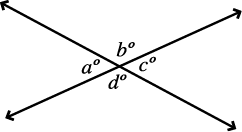How Does the ISEE Measure Quantitative Ability?
Home > ISEE Test > ISEE Math >
How Does the ISEE Measure Quantitative Ability?
The ISEE tests your understanding of quantitative concepts and your ability to apply those concepts with two question types:
 Standard multiple-choice questions
Standard multiple-choice questions
 Quantitative comparisons
Quantitative comparisons
The quantitative reasoning test consists of 37 questions. About half of these are standard multiple-choice questions, and the remainder are quantitative comparisons. Five questions on this section are unscored.
Multiple Choice
The directions for the standard multiple-choice questions look similar to this:
Directions: Work each problem in your head or on the space available on the pages of the test booklet and choose the correct answer. All figures are accurately drawn unless otherwise noted. All letters stand for real numbers.
Here are two sample ISEE standard multiple-choice quantitative ability questions. Try each of these on your own before you read the explanation that accompanies it.
1. If A2 + B2 = A2 + X2, then B equals
(A) 
(B) X2 - 2A2
(C) 
(D) A2 + X2
The correct answer is (A). Subtract A2 from both sides of the equation: B2 = X2, therefore .
.
2. How much time is there between 8:30 a.m. today and 3:15 a.m. tomorrow?
(A) 17 hours
hours
(B) 18 hours
hours
(C) 18 hours
hours
(D) 18 hours
hours
The correct answer is (D). 12:00 = 11:60
From 8:30 a.m. until noon today: 11:60 - 8:30 = 3:30
3 hrs. 30 min.
From noon until midnight: 12 hours
From midnight until 3:15 a.m.: 3 hrs. 15 min.
Total: 3 hrs. 30 min. + 12 hrs. + 3 hrs. 15 min. = 18 hrs. 45 min. = 18 hours
hours
Quantitative Comparisons
ISEE quantitative comparisons are probably not like any other math question you've ever seen. These questions present you with two quantities, one in Column A and one in Column B. Your job is to decide whether one quantity is greater, whether the two quantities are equal, or whether no comparison is possible. There are always four answer choices for this question type, and they are always the same. The directions on this part of the test are similar to this:
Directions: For each of the following questions, two quantities are given-one in Column A, the other in Column B. Compare the two quantities and choose:
(A) if the quantity in Column A is greater
(B) if the quantity in Column B is greater
(C) if the quantities are equal
(D) if the relationship cannot be determined from the information given
Remember the following information as you tackle quantitative comparison questions:
o For some questions, information concerning one or both of the quantities to be compared is centered above the entries in the two columns.
o Symbols that appear in both columns represent the same thing in Column A as in Column B.
o Letters such as x, n, and k are symbols for real numbers.
o All figures are accurately drawn unless otherwise noted.
Here are two sample ISEE quantitative comparison questions. Try each of these on your own before you read the explanation that accompanies it.
3.

NOTE: Figure not drawn to scale.
|
Column A |
Column B |
|
180 - a |
d + c - b |
The correct answer is (D).

Since we do not know if a > b or a < b, the relationship cannot be determined.
|
|
Column A |
|
Column B |
|
4. |
|
||
|
|
|
|
|
The correct answer is (B).

Column A < Column B
Note
In ISEE reading comprehension questions, the answers will always be directly stated or implied in the passage. You can think of it as an open-book test!


